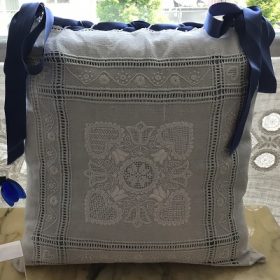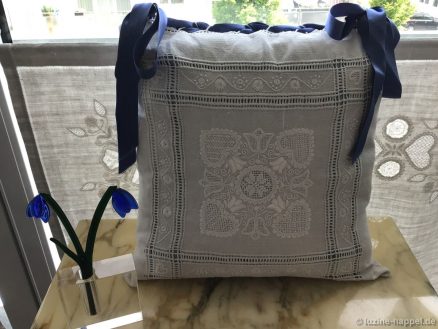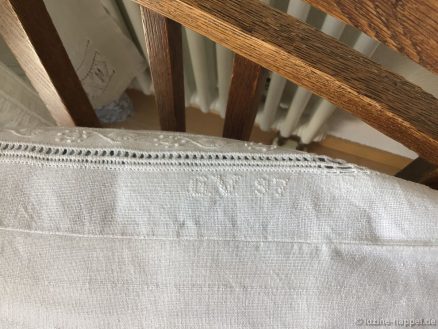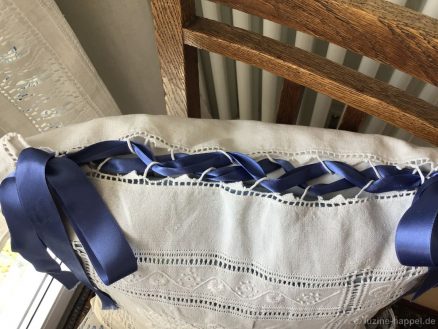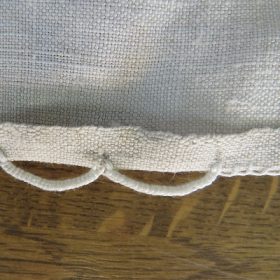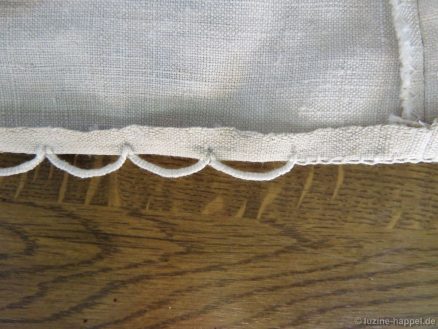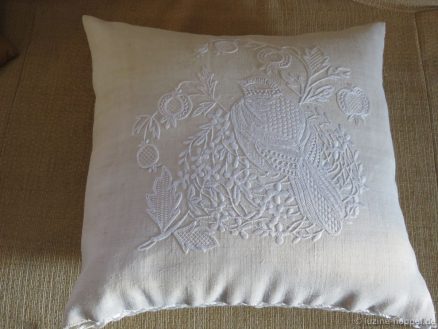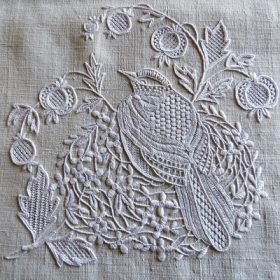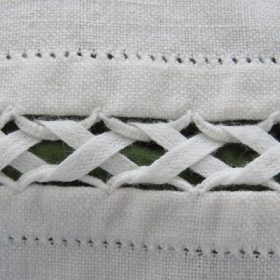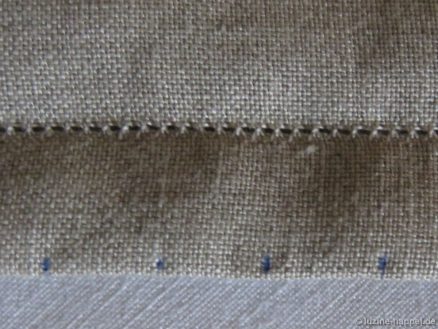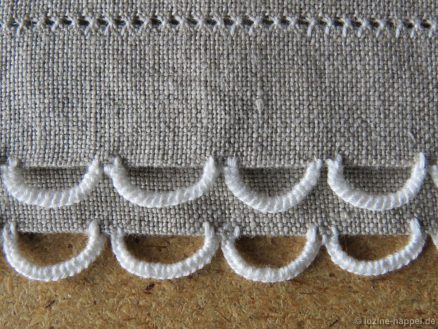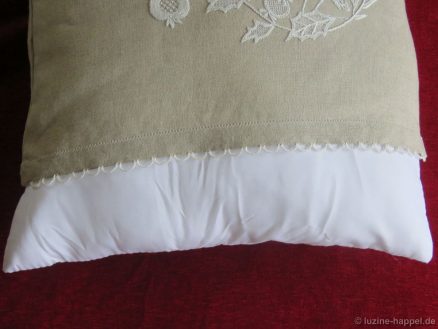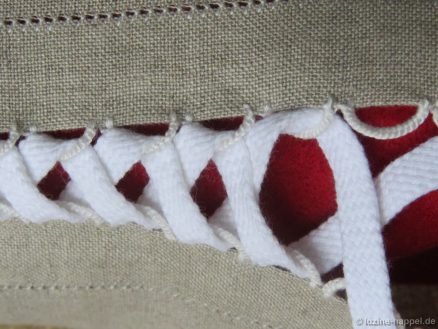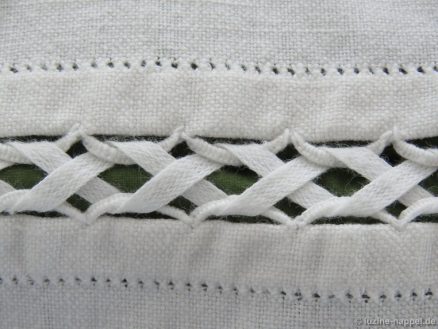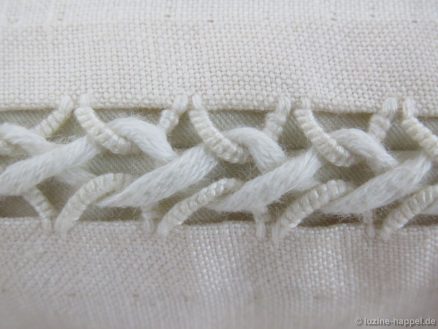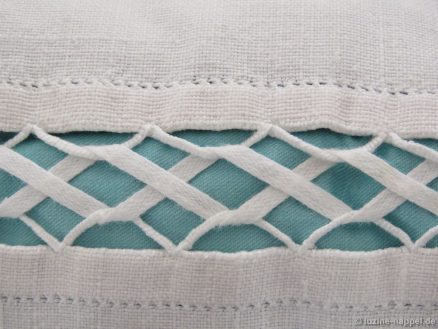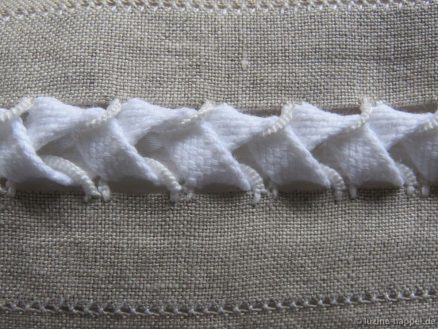I now have a wide variety of designs on the subject of „pomegranates and birds“. Visitors to my exhibition have already been able to take a close look at some of the embroidered items.
Christa Waldmann designed a second pattern for me to match the pattern of sofa cushion cover 1.
She skillfully arranged the branches with the pomegranate blossom buds so intertwined that the structure forms a nest on which the bird perches. The ripe pomegranates with the tempting fruits are close enough to be pecked at.
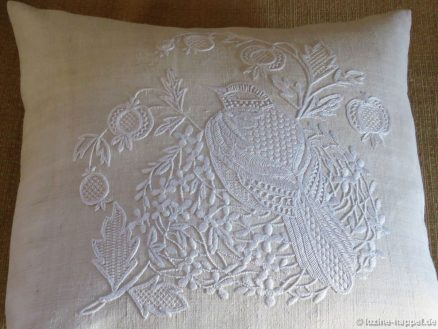
This time I used 17/cm count handwoven linen. The many satin stitches can be embroidered particularly well on the very dense fabric. The pattern was transferred using an iron-on pen.
The thicker stems were embroidered with Satin stitches, which first became wide and then simple Stem stitches. The motifs were surrounded with Stem stitches.
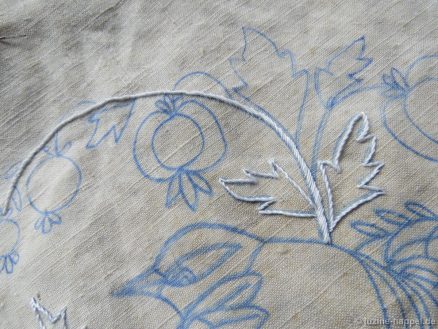
Only the motif areas of the bird were traced with wrapped Chain stitches.
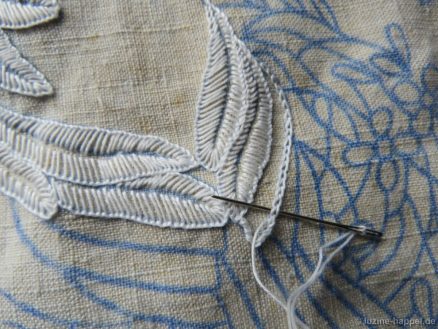
The feather dress was modeled with Blanket stitches.
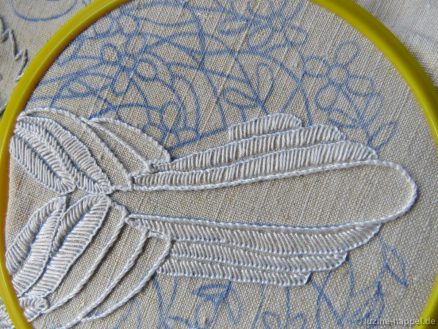
The eye has been outlined with wrapped backstitching
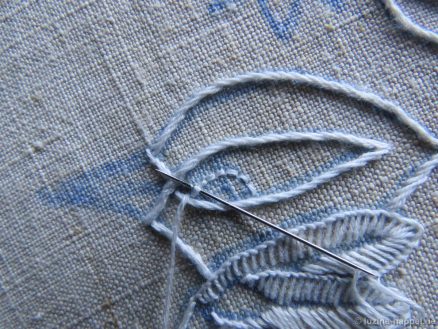
and the pupil filled with Satin stitches. The beak was also represented by Satin stitches.
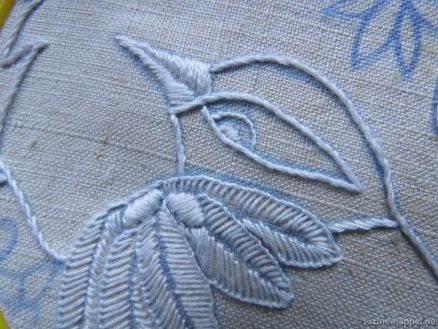
The slightly larger leaves were designed as divided leaves.
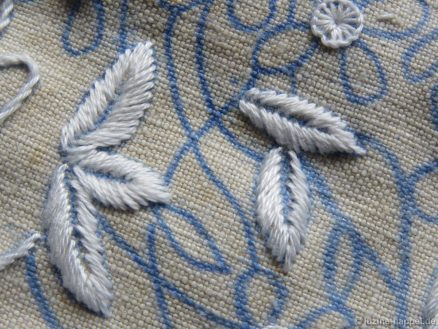
The pomegranate blossom buds were first given a center Blanket stitch eyelet and then – working from the outside in – filled with a Satin stitches using two strands of 6-ply stranded cotton.
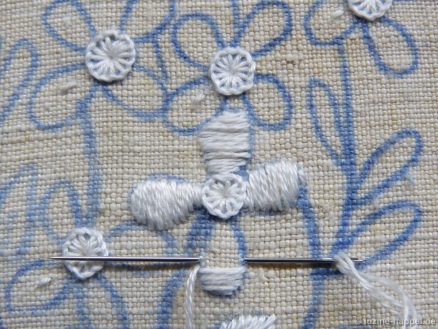
The braiding of the branches was then worked out with Coral Knot stitches.
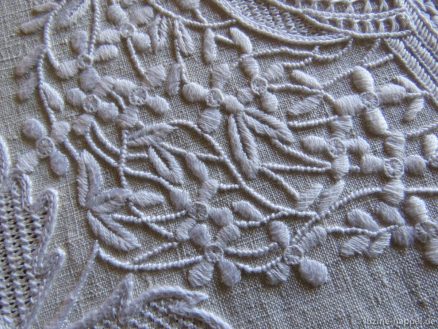
The large leaves were given different filling patterns.
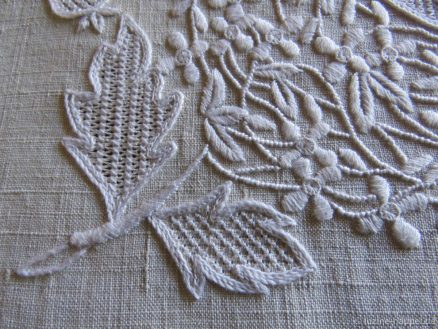
The pomegranate areas were filled with Diagonal Cross stitches. The large pomegranates also received an edge with a curved line pattern.
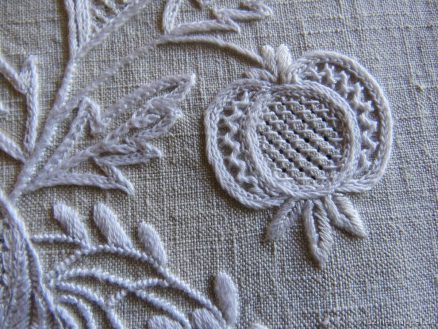
The bird’s head was decorated with Bullion stitches and Bullion knots, the bird’s back was decorated with the Limetrosen square eyelet pattern Magic Net.

The bird’s belly was filled with Wave stitches and the tail feather was given the square eyelet pattern “Federkleid (- feather dress)”. The remaining feathers were embroidered with Wing stitches.
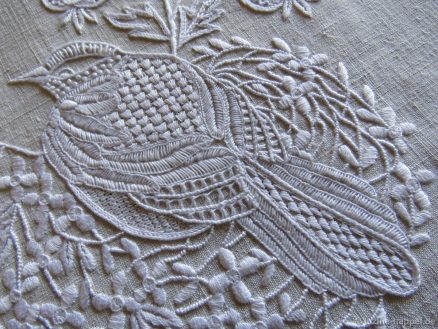
By alternating between striking and less conspicuous filling patterns, the design could be presented well in terms of embroidery.
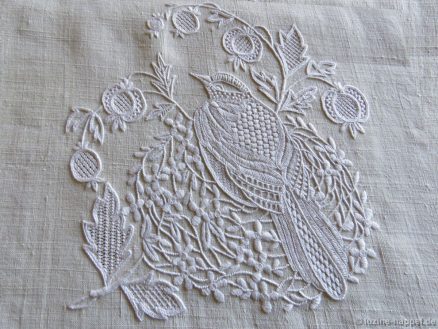
However, you can also use completely different filling patterns that slightly change the effect.
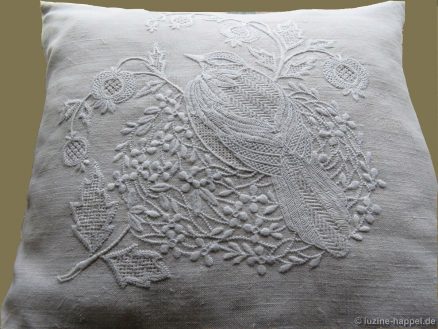
You can purchase both pillow patterns from me as pdf files (printout: double page) for €8.00 each.
